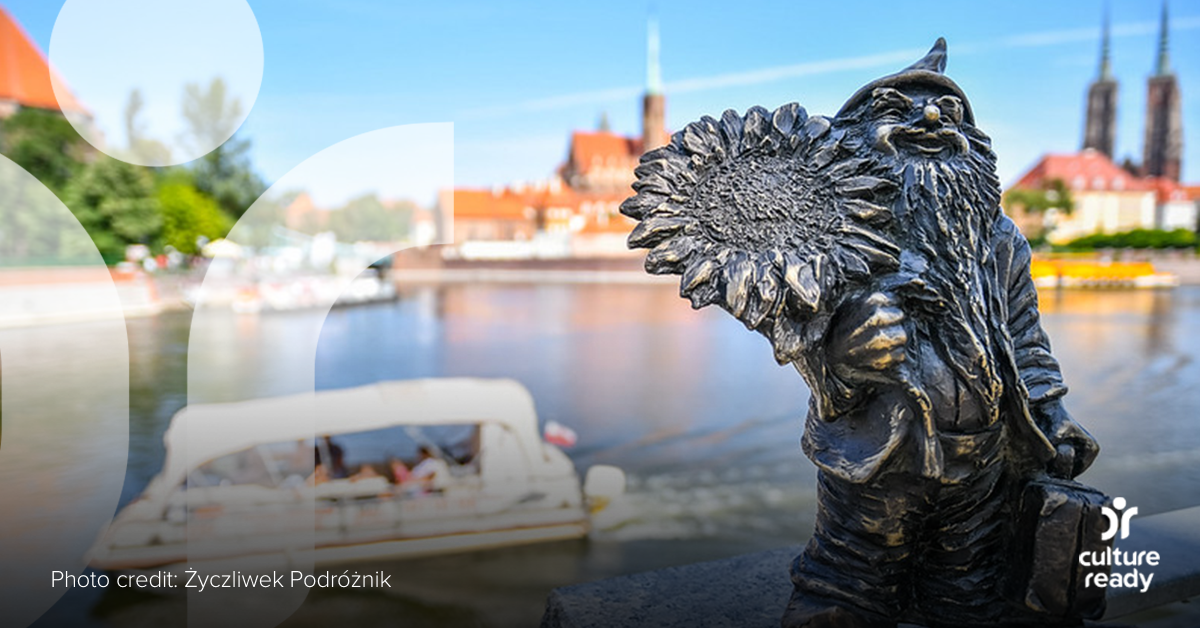The Dwarves of Wrocław, Poland
It’s been called the “Venice of Poland,” but Wrocław is also the city of dwarves. You’ll find hundreds of them — some hidden, some in plain sight — while walking through the medieval city.
There’s a dwarf asleep on a bed, another withdrawing money from an ATM, one working on a laptop, a dentist extracting a tooth, and even an orchestra of dwarves outside the concert hall.
As adorable as these diminutive residents of Wrocław are, the three- to seven-inch tall bronze figures are symbols of peaceful protest against authoritarianism and censorship.
In the 1980s, a group called the Orange Alternative dressed up as dwarves and spray-painted pictures of them on top of Communist propaganda. The idea was to use humor to oppose the Communist regime and highlight the absurdity of its oppression.
The leader of the group, Waldemar Fydrych, led public marches through the city streets, calling for “dwarves’ rights.” When police tried to crack down on these protests, news of the pro-gnome arrests made the government look ridiculous.
Fydrych once said, “Can you treat a police officer seriously, when he is asking you the question, ‘Why did you participate in an illegal meeting of dwarves?’”On June 1, 1988, 10,000 protestors wearing cone-shaped hats marched in downtown Wrocław demanding “freedom for the dwarves.”
To honor the Orange Alternative movement, Polish artist Olaf Brzeski created Wrocław’s first bronze dwarf, Papa Krasnal (“Papa Dwarf”), in 2001. The statue stands on Swidnicka Street, where members of the Orange Alternative used to gather. Several years later, the city enlisted another sculptor Tomasz Moczek, to create more of these tiny statues. Each represents a part of the city’s history and daily life, and each has a detailed backstory.
You can read about the dwarves and learn their names on a website the city created. There are also apps and walking tours that focus on finding them, and during winter, it’s traditional for residents of Wrocław to dress the dwarves in scarves, hats, and gloves.
